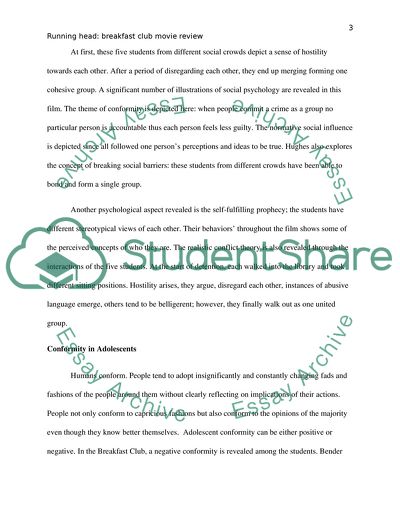Cite this document
(Psychological Analysis of the Movie Breakfast Club Review Example | Topics and Well Written Essays - 1750 words, n.d.)
Psychological Analysis of the Movie Breakfast Club Review Example | Topics and Well Written Essays - 1750 words. https://studentshare.org/psychology/1815642-movie-analysis-of-breakfast-club-relating-to-social-psychology
Psychological Analysis of the Movie Breakfast Club Review Example | Topics and Well Written Essays - 1750 words. https://studentshare.org/psychology/1815642-movie-analysis-of-breakfast-club-relating-to-social-psychology
(Psychological Analysis of the Movie Breakfast Club Review Example | Topics and Well Written Essays - 1750 Words)
Psychological Analysis of the Movie Breakfast Club Review Example | Topics and Well Written Essays - 1750 Words. https://studentshare.org/psychology/1815642-movie-analysis-of-breakfast-club-relating-to-social-psychology.
Psychological Analysis of the Movie Breakfast Club Review Example | Topics and Well Written Essays - 1750 Words. https://studentshare.org/psychology/1815642-movie-analysis-of-breakfast-club-relating-to-social-psychology.
“Psychological Analysis of the Movie Breakfast Club Review Example | Topics and Well Written Essays - 1750 Words”. https://studentshare.org/psychology/1815642-movie-analysis-of-breakfast-club-relating-to-social-psychology.


